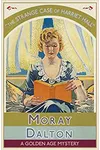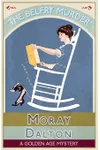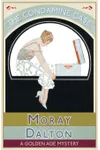Step into the shadowy, suspense-filled world of Hugh Collier, where clever mysteries and sharp social insights collide in the golden age of detective fiction! Penned by Katherine Renoir under the pseudonym Moray Dalton, the Hugh Collier series follows a shy yet brilliant Scotland Yard inspector and his tenacious private investigator ally, Hermann Gilde, through fourteen captivating novels. From 1929 to 1951, these stories enthralled readers with their intricate plots and timeless charm, only to slip into obscurity after Renoir’s death in 1963. Thanks to recent reprints, this hidden gem is sparkling anew for modern mystery lovers.
With a knack for blending whodunit puzzles with commentary on class and gender, Dalton’s work feels both classic and surprisingly fresh. Whether you’re a fan of Agatha Christie or just love a good sleuthing tale, Hugh Collier’s world is a delightful dive into vintage crime-solving.
How Hugh Collier Began
Katherine Renoir, writing as Moray Dalton, launched the Hugh Collier series in 1929 with One By One They Disappeared. Born in 1881 in London, Renoir was a privately educated English gentlewoman with a passion for storytelling and a keen eye for societal nuances. Her love for Italy and its culture often seeped into her narratives, though most of her mysteries unfolded in England’s cozy villages and grand manors. After early novels like Olive in Italy (1909), Renoir found her true calling in crime fiction, creating Hugh Collier—a reserved but razor-sharp inspector—and Hermann Gilde, a persistent private eye who isn’t afraid to bend the rules.
The series emerged during the golden age of detective fiction, a time when intricate plots and charismatic sleuths ruled the genre. Dalton’s unique spin was her focus on character-driven stories and social commentary, setting her work apart from the puzzle-heavy mysteries of her peers.
The Heart of Hugh Collier
The Hugh Collier series spans fourteen novels, each a masterclass in suspense and storytelling. One By One They Disappeared (1929) kicks things off with a chilling mystery: guests at a lavish dinner party vanish one by one, leaving Collier to untangle a web of motives. The Night of Fear (1931) delivers a festive yet fatal Christmas party where a blind man discovers a body during a game of hide-and-seek. The Strange Case of Harriet Hall (1936) sees a young woman’s visit to her aunt end in murder, with Collier uncovering dark family secrets. Finally, The Art School Murders (1943) explores a wartime blackout where an artist’s model meets a grim fate.
Dalton’s mysteries are set in quintessential English locales—country houses, remote cottages, and foggy streets—perfect for eerie, atmospheric crimes. Her themes of class, gender, and societal expectations add depth, as characters navigate rigid social hierarchies or challenge norms. The interplay between Collier’s methodical police work and Gilde’s unorthodox tactics creates a dynamic duo, while Dalton’s concise yet evocative prose keeps readers hooked.
What sets the series apart is its balance of cozy mystery vibes and darker undertones. Dalton wasn’t afraid to explore grim topics like betrayal or exploitation, making her stories resonate beyond the typical whodunit. Fans praise her ability to craft memorable characters and surprises that widen the mystery, keeping you guessing until the final page.
Why Hugh Collier Resonates
Though Dalton’s work faded after her death, recent reprints by Dean Street Press and Spitfire Publishers have sparked a revival. Modern readers are rediscovering her as a overlooked gem of the golden age, with critics comparing her to giants like Margery Allingham. Her focus on character and social issues feels ahead of its time, appealing to those who crave more than just a puzzle in their mysteries. The series’ influence lies in its ability to bridge classic detective tropes with nuanced storytelling, inspiring a new appreciation for lesser-known authors of the era.
Hugh Collier’s enduring appeal comes from its blend of nostalgia and relevance. It’s a time capsule of 1930s–1950s Britain, yet its themes of justice and human nature remain universal. For mystery buffs, it’s a chance to uncover a series that rivals the genre’s greats.
- Publication Years: 1929–1951
- Number of Books: 14
- Main Characters: Inspector Hugh Collier, Hermann Gilde
- Genre: Golden Age Mystery
Grab One By One They Disappeared and dive into Hugh Collier’s thrilling world of secrets, suspense, and sleuthing!




